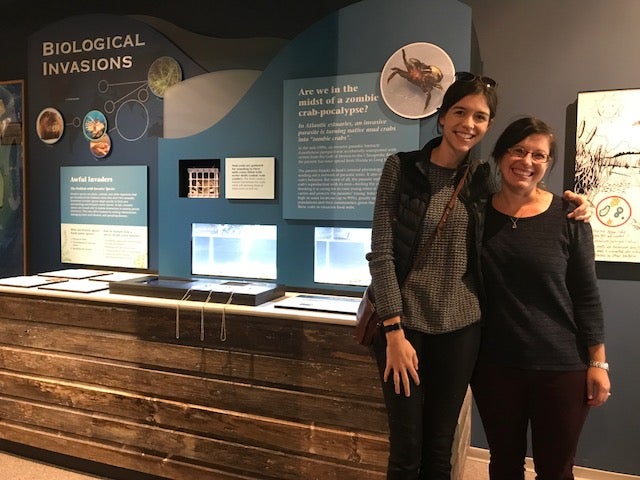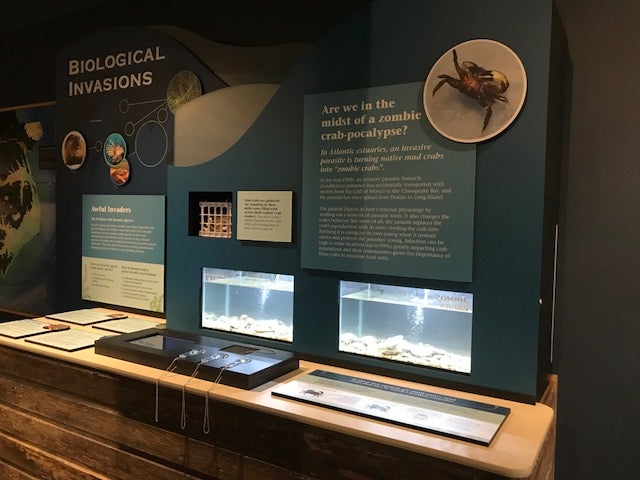Invasive species exhibit opens at N.C. Estuarium
East Carolina University biologist April Blakeslee and students in her lab have created a new exhibit on invasive species at the North Carolina Estuarium in Washington. The exhibit will be unveiled Thursday, Oct. 26 at 4:30 p.m.

ECU biologist April Blakeslee and art and design student Kayla Clark have created a display about invasive species at the N.C. Estuarium in Washington. The exhibit opens Thursday, Oct. 26. (contributed photos)
Funded by N.C. Sea Grant with additional contributions from the N.C. Estuarium and ECU’s Department of Biology, Thomas Harriot College of Arts and Sciences, and Division of Research, Economic Development and Engagement, the exhibit highlights Blakeslee’s research on zombie crabs — mud crabs infected with a parasite that takes over their reproductive systems — as well as notable invaders such as lionfish and hydrilla.
“We hope that visitors will come away with a better understanding about invasive species and will be fascinated by this host-parasite system and also the important role that parasites can have in ecosystems” said Blakeslee. “They will also learn more about how each person can make a difference in preventing the spread of invaders by not releasing unwanted pets; cleaning boats of attached algae, plants and animals; cleaning boots — essentially, the message that every person can make a difference in conservation-related efforts.”
 ECU art and design graduate student Kayla Clark was instrumental in the design of the exhibit, Blakeslee said. “The exhibit is truly interdisciplinary, bringing art and science together for educating about an important conservation issue.”
ECU art and design graduate student Kayla Clark was instrumental in the design of the exhibit, Blakeslee said. “The exhibit is truly interdisciplinary, bringing art and science together for educating about an important conservation issue.”The zombie crab parasite is a kind of barnacle, called Loxothylacus panopaei or Loxo for short, that is native to the Gulf of Mexico but is now being found along the east coast as far north as Long Island Sound. Blakeslee and her students dubbed the infected crabs zombie crabs because they continue living but are reproductively dead. The parasite also affects the crab’s behavior, causing it to protect the egg sac as if it were the crab’s own young. The protective behavior is found not only in female crabs, but also in males, which would not normally exhibit such tendencies.
By hijacking the mud crabs’ reproductive system, Blakeslee said the parasite could have a dramatic impact on the population. She and a team of researchers are monitoring mud crab populations in eastern North Carolina to assess and track the spread of the parasite.
The N.C. Estuarium is located at 223 E. Water St. in Washington. For more information visit www.partnershipforthesounds.net/nc-estuarium.
-by Jules Norwood, ECU News Services